One of our regular stringers arriving at McCarran International Airport, Las Vegas for #dse2013 sent us this failure (seen Sunday evening)…
By the way, the Samsung screen behind this (top right in picture above) has also failed!
And another stringer, sent us these TWO slightly clearer pictures (above and below) also taken Sunday evening…
On Monday morning someone had actually turned up to take a look at the problem (see below) …
But what looks like LG folks, were still hard at work on their 4K screen install on Monday evening (shown below) …
We shouldn’t have to point out to ANY party involved in this install, the WinDoze basics, see ‘Using Windows As A Signage Platform [6]‘.
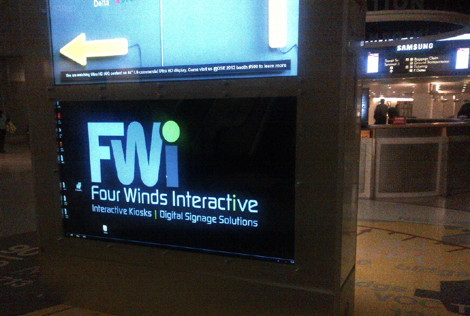
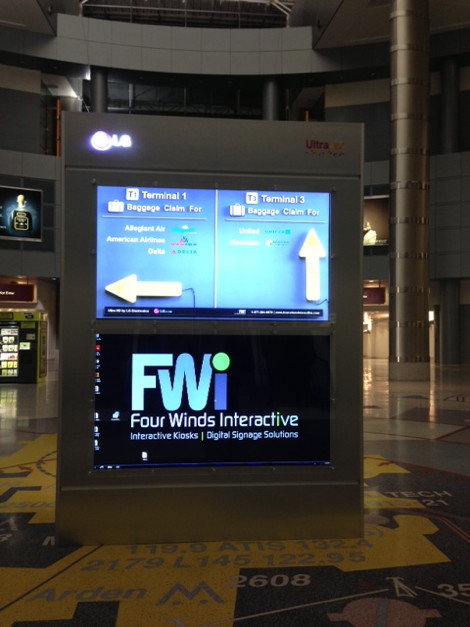
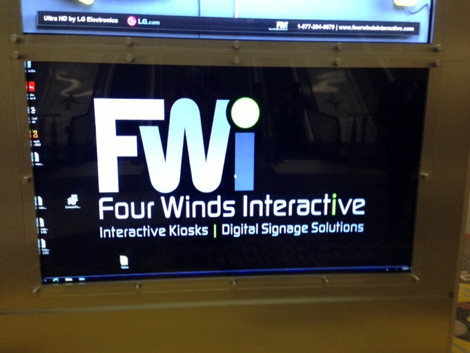
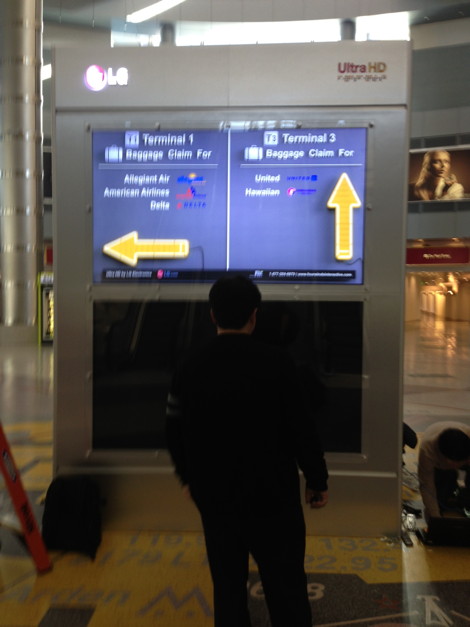
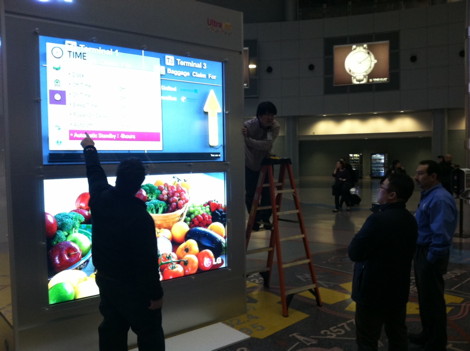
4 Comments To "#dse2013 @FWiDigitalSigns LAS #Fail"
#1 Comment By Dmitry Sokolov On 25 February 2013 @ 16:19 @722
What’s interesting (and educational) in this post that when rolling-out digital signage projects, the Windows Desktop should be considered as another element of a comprehensive content strategy.
Probability of failure is a reality of any technology-based solution. How we mitigate the potential failure, is key to how stressful an install may be and as a result how satisfied the end-user will be over the lifetime of the project.
While more complicated measures are required to fix out-of-band failures and blue-screen-of-death issues, software crashes (resulting in temporary displays of Windows desktop until software reboots or issue is troubleshooted) can be mitigated by planning for potential failure with tidy and relevant Windows Desktop organization.
First, remove the junk. All desktop shortcuts should be removed and windows task-bar set to auto-hide. There is no justification to have any shortcuts/icons set-up on a desktop of a digital signage appliance.
Second, desktop wallpaper should be set to content relevant to the install at hand (a “welcome to”, generic logo, menu or similar content), so if the desktop is showing after a software crash, at a quick glance it would appear to be a static content element, not an unwanted promo for a software that may have crashed or somehow closed, etc…
#2 Comment By Linus Torvald On 25 February 2013 @ 16:23 @724
Dmitry:
At the risk of being obvious, may I suggest an alternative to planning for the failure of Windows? I call it (most humbly) Linux.
#3 Comment By Jason Cremins On 25 February 2013 @ 16:31 @730
We support Windows, but work with hardware vendors to lock down WES7 images to only the core components needed to run our software. This improves reliability considerably, avoiding all but internal Windows failures that can still result in the infamous BSOD.
However, we also support nonPC and noPC technology, all of which are non-Windows and you cannot beat them for resilience, especially for unattended 24/7 use.
#4 Comment By Dmitry Sokolov On 25 February 2013 @ 19:08 @839
While Linux is certainly an option for some DS Software vendors, it is not a default ticket to eliminate software crashes that have likely caused the pictured faux-pas…
Further, for most distributions of Linux, the desktop content strategy above should be still valid, as they would still use a form of a desktop equivalent that would be exposed in a software (not OS) crash/exit.
Finally, countless variables could cause an application failure, not nearly all are OS related.
Message here is ‘to succeed, you must plan to fail’ (whatever OS or software you use).